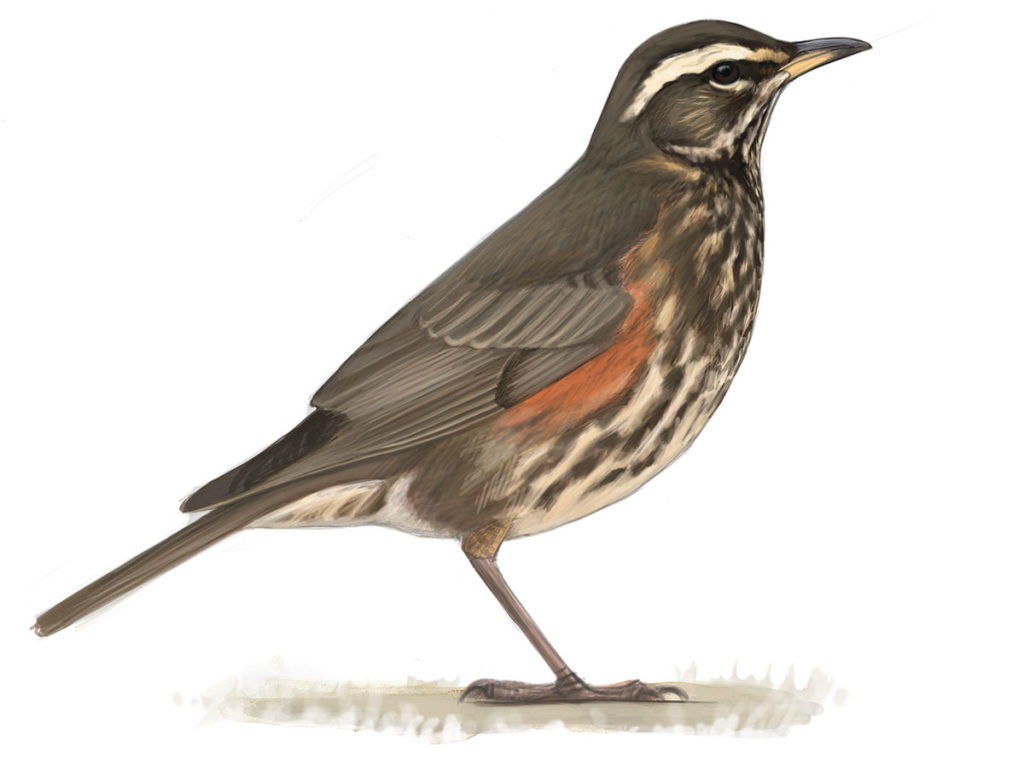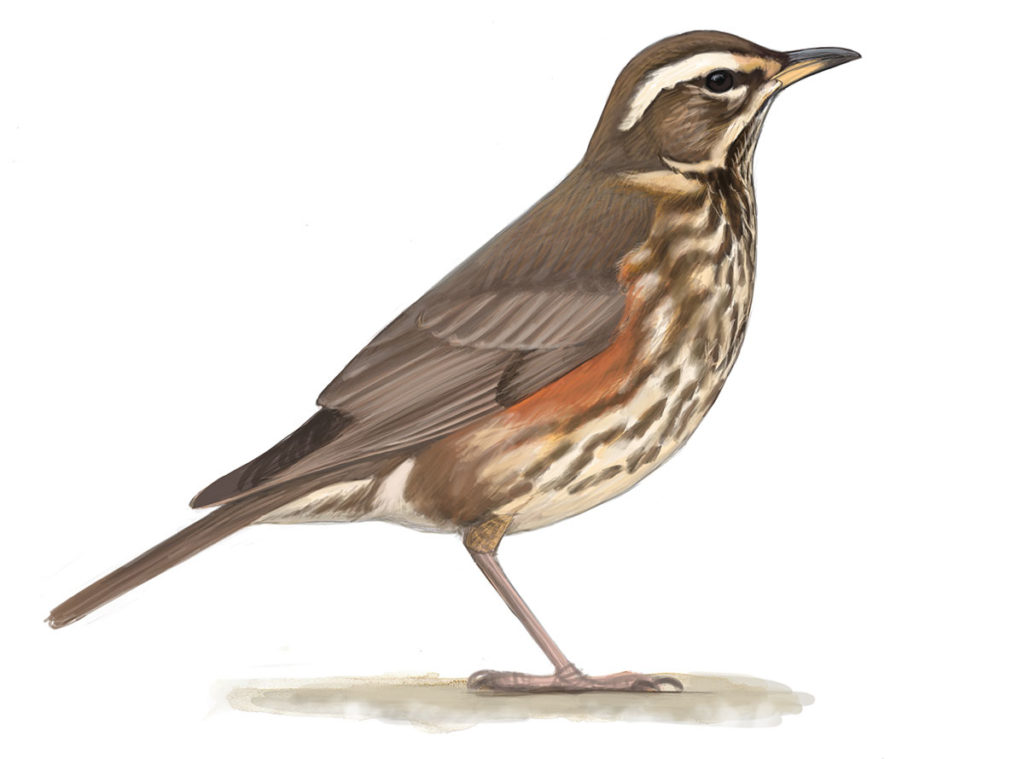Here is another recent project: I’ve been working on new and improved illustrations of Redwing for the bird guide and app, showing the differences between the two subspecies.
The Redwing (Turdus iliacus) is a thrush common across Eurasia, from Iceland to Siberia. It is a very rare visitor to North America, mostly in Atlantic Canada where the species has been recorded a couple of dozen times. These occurrences are mainly in winter, December to February, and are often associated with easterly winds that reach from Europe to Canada, helping to carry migrating Redwings across the Atlantic. In early 2021 just such a pattern of easterly winds brought multiple Redwings to Canada, plus several west to Maine.
One particularly interesting aspect of Redwings is that two subspecies can both occur here. One subspecies nests in Iceland and winters in western Europe, the other subspecies nests across the entire continent from Scandinavia to Siberia, with many wintering in western and southern Europe.
The Icelandic subspecies is overall darker and colder brown, with heavier and darker streaking and facial markings. All of the features described below are variable, and many birds are intermediate and not easily categorized as one subspecies or the other, but the extremes are fairly obvious.
Icelandic

- streaking on underparts broader, often blurring together into solid patches and continuous lines, leaving less pale color exposed
- streaks on lower part of breast coalesce into a solid dark band extending from near the bend of the wing to near the center of the breast
- dark line through eye broader and darker
- malar stripe is encroached by dark streaks, leaving only a narrow and irregular pale stripe
- pale patch on neck sides reduced
- upperparts darker and colder brown
- legs and feet average darker
- size averages about 3% larger
Eurasian

- streaking on underparts narrower, usually forming distinct and broken lines with a lot of pale color still present
- streaks on lower part of breast blur somewhat to form a vague band, but with streaks still apparent, not a solid brown patch
- dark line through eye narrower and paler
- malar stripe tends to be unstreaked and well-defined, a neat pale stripe from bill to neck
- pale patch on neck sides larger and more obvious
- upperparts paler and warmer brown
- legs and feet average paler
- size averages about 3% smaller


Hmmm…ok. This is something I never thought to look for, although I’m in New England not Canada.
What habitat David?
“This is something I never thought to look for”,
Same here, as I get Redwing every winter in my local park in Dublin, Ireland. As for distinguishing them apart in the field, that would be an exercise in itself as they are a very nervous bird not being able to get anywhere near them even for a good photograph.
Hey Dave…awesome paintings!
I did look at these two subspecies recently after seeing the Maine bird which I think fits coburni.
https://naturescapeimages.wordpress.com/2021/02/04/31st-january-2021-maine-stay/
Hi Julian, Thanks! I suspected that there must be some difference in the undertail coverts pattern, but it was hard to confirm in photos. I’m glad to know about Martin Garner’s study, and also your work to identify the Maine bird as coburni. I wonder if any of the eastern North American records have been iliacus?
Wonderful paintings. I, too, went on a trip Jan. 31 to Maine to see my first. It was well hidden in the bushes but appeared to be coburni.
My Dad had one fly through the yard in New Brunswick, January 21st 2021 he got some nice pics of it sitting in a Poplar tree in the yard for the local rare bird alert! Consider myself a good birder but I can’t beat my Dad, the rare birds just show up for him .